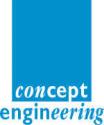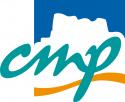UB04 Session 4
Date: Tuesday 15 March 2016
Time: 17:30 - 19:30
Location / Room: Booth 15, Exhibition Area
| Label | Presentation Title Authors |
|---|---|
| UB04.1 | MICROTESK ARMV8 EDITION: SPECIFICATION-BASED TEST PROGRAM GENERATOR Presenter: Andrei Tatarnikov, Russian Academy of Sciences (RAS), RU Authors: Andrei Tatarnikov, Alexander Kamkin and Artem Kotsynyak, Russian Academy of Sciences (RAS), RU Abstract This work presents a test program generation tool for ARMv8 microprocessors. The tool consists of two parts: an architecture-independent test program generation core and ARMv8 specifications. The specifications provide information on the instruction set architecture and the memory management unit of an ARMv8 microprocessor. Test programs are generated on the basis of test templates provided by users and testing knowledge extracted from the specifications. Test templates describe scenarios to be covered in terms of test situations, while testing knowledge specifies constraints that should be satisfied in order for these situations to occur. The architecture-independent test program generation core implements a wide range of test generation techniques including random generation, combinatorial generation, constraint solving and symbolic execution. Flexible architecture of the tool allows integrating different generation methods and extending the test generation core with new engines. Download Paper (PDF) |
| UB04.2 | RT-POWMODS: RUN-TIME CPU POWER MODELS FROM REAL DATA Presenter: Matthew Walker, University of Southampton, GB Authors: Matthew Walker1, Stephan Diestelhorst2, Andreas Hansson2, Geoff Merrett1 and Bashir Al-Hashimi1 1University of Southampton, GB; 2ARM Ltd., GB Abstract Being able to accurately estimate CPU power consumption is a key requirement for both controlling online CPU energy-saving techniques and design-space exploration. Models built and validated using measured data from an actual device are valuable as their accuracy is known and trusted. We present our techniques and freely available software tools for running experiments on mobile development boards and using the recorded data to build accurate run-time power models. Our novel methodology uniquely considers the stability of the model and we demonstrate how it allows the models to achieve a higher accuracy on a wider range of workloads. We show how our tools are able to predict run-time power of an ARM Cortex-A15 CPU with an average error of less than 3% when validated with over 50 workloads. Download Paper (PDF) |
| UB04.3 | FORMAL VERIFICATION OF CLOCK DOMAIN CROSSING USING GATE-LEVEL MODELS OF METASTABLE FLIP-FLOPS Presenter: Ghaith Tarawneh, Newcastle University, GB Authors: Ghaith Tarawneh, Andrey Mokhov and Alex Yakovlev, Newcastle University, GB Abstract We present a first prototype of a gate-level tool that enables simple and intuitive verification of multi-clock designs. The tool's underlying methodology (described in the paper "Formal Verification of Clock Domain Crossing using Gate-level Models of Metastable Flip-Flops" to be presented in the conference) relies on transforming gate-level netlists so that they can reproduce problematic CDC behaviour digitally. Processed netlists can then be passed to formal verification tools to identify and debug CDC faults. The tool is at an early development stage but consists of a functional Verilog parser and CDC transformation functions that can be invoked from the command line. The demo will showcase the tool using simple sender-receiver circuits. Synthesized netlists will be processed by the tool and then fed to a formal verification tool to identify CDC issues (e.g. missing synchronizers, path convergence). Verification output from source and processed netlists will be compared. Download Paper (PDF) |
| UB04.4 | GRIP: GRAPH-REWRITING-BASED IP-INTEGRATION (GRIP) - AN EDA TOOL FOR SOFTWARE DEFINED SOC DESIGN Presenter: Munish Jassi, Technische Universität München, DE Authors: Munish Jassi, Yong Hu, Jian Lyu, Daniel Mueller-Gritschneder and Ulf Schlichtmann, Technische Universität München, DE Abstract The GRIP tool - Graph-Rewriting-Based IP-Integration - provides system engineers with a comprehensive platform that takes care of their IP-integration concerns for IP-centric SoC designs, also referred to as SW-defined SoCs. The tool uses the standardized meta-data IP-XACT format for HW descriptions and encodes the design IP-integration knowledge as a set of integration rules based on graph rewriting and grammar theory. The tool automates and encodes the step-by-step integration of IPs to build a desired system architecture. Multiple sequential IP-integration steps can be compiled to iteratively generate new architectures. For design space exploration (DSE), constraints can be given to generate a desired subset of candidate SoCs. Code generation generates the design files for each architecture. This is demonstrated as DSE for OpenCV CV application running on a Xilinx Zynq chipset based Zedboard. GRIP additionally generates the HW-drivers for both non-OS and Linux-based systems. Download Paper (PDF) |
| UB04.5 | A-LOOP: AMP SYSTEM WITH A DUAL-CORE ARM CORTEX A9 PROCESSOR WITH LINUX OPERATING SYSTEM AND A QUAD-CORE LEON3 PROCESSOR WITH LINUX OPERATING SYSTEM, OPENMP LIBRARY AND HARDWARE PROFILING SYSTEM Presenter: Giacomo Valente, Università Degli Studi Dell'Aquila, IT Authors: Giacomo Valente and Vittoriano Muttillo, Università Degli Studi Dell'Aquila, IT Abstract Isles of computational elements with different characteristics can be exploited for separate tasks with different non-functional requirements. This can drive to realization of smart System On Modules (SoM). In such a context, SoC with FPGA can be viewed as platforms useful to prototype these architectures. This demo shows a SoM prototype for aerospace applications developed on Zynq7000 SoC, composed of dual-core ARM Cortex A9 with Linux operating system (isle#1) able to interface with external data, and quad-core Leon3 with SMP Linux operating system (isle#2), able to execute parallel applications based on OpenMP library. These 2 computational isles share an external DDR memory, so that isle#1 can provide data and collect results from isle#2. Moreover, isle#1 is able to monitor performance of isle#2 without introducing software overhead (i.e. no SW instrumentation) by using a hardware profiling system. The whole system that executes a MANET localization algorithm will be presented. Download Paper (PDF) |
| UB04.6 | IDDD: AN INTERACTIVE DEPENDABILITY DRIVEN DESIGN SPACE EXPLORATION Presenter: Stefan Scharoba, Brandenburg University of Technology Cottbus-Senftenberg, DE Authors: Stefan Scharoba, Jacob Lorenz and Heinrich T. Vierhaus, Brandenburg University of Technology Cottbus-Senftenberg, DE Abstract Due to the downscaling of transistor feature sizes, today's integrated circuits are much more likely to be affected by transient or permanent faults. In order to still meet certain dependability requirements, many different fault tolerance techniques have been developed, which can handle these faults in the field. Each of these techniques is associated with distinct costs and benefits. As a consequence, finding the fault tolerant implementation of the system that meets the actual requirements best represents a challenging task. We propose a tool that supports this process. It offers a set of hardware based fault tolerance techniques that can be applied to a given VHDL model. Afterwards, costs and benefits of the respective design choice are estimated automatically. Thus several fault tolerant versions of the design can be evaluated and compared with each other without implementing them manually. Finally, the VHDL code of the preferred design candidate can be generated by the tool. Download Paper (PDF) |
| UB04.7 | CONTREP: A SINGLE-SOURCE FRAMEWORK FOR UML-BASED MODELLING AND DESIGN OF MIXED-CRITICALITY SYSTEMS Presenter: Fernando Herrera, University of Cantabria, ES Authors: Fernando Herrera and Eugenio Villar, University of Cantabria, ES Abstract Mixed-criticality systems integrate applications, platform resources and requirements with different criticality. A criticality reflects the impact of either a failure of a component or a violation of a requirement, which can range from irrelevant to catastrophic effects. This booth presents the CONTREP framework, which supports UML/MARTE based modeling, analysis and design of mixed-criticality embedded systems. The booth shows a model of a quadcopter control system which integrates safety critical (e.g. flight control), mission-critical (e.g., a video processing payload), and non-critical (e.g., monitoring) functions. The booth shows how mixed-criticality is captured, together with the description of the functional architecture, and of the multi-core embedded platform where the system is implemented; how CONTREP automates different design activities, i.e. model validation, performance assessment and design space exploration, exploiting mixed-criticality information in every case. Download Paper (PDF) |
| UB04.8 | GPCDS: AN INTERACTIVE TOOL FOR CREATING SCHEMATIC MODULE GENERATORS IN ANALOG IC DESIGN Presenter: Matthias Greif, Reutlingen University, DE Authors: Matthias Greif and Juergen Scheible, Reutlingen University, DE Abstract While digital design automation is highly developed, analog design automation still remains behind the demands. Previous approaches of circuit creation, which are usually based on optimization algorithms, do not satisfy industrial requirements. A promising alternative is given by procedural approaches, which imitate the solution strategy of a human expert. We are working on parameterized generators (such as PCells) for analog circuit and layout modules, special kinds of such procedures. We present "gPCDS", a novel tool for the creation of schematic generators for analog circuit design. Associated with a common design environment, gPCDS offers a sophisticated interactive design flow for the development of schematic PCells. gPCDS thus substitutes the crucial process of manual code writing by an intuitive graphic-based way of schematic PCell creation. The GUI of gPCDS provides a variety of useful functions, such as defining parameter ranges or placing predefined building blocks. Download Paper (PDF) |
| UB04.9 | ANALYSIS AND VERIFICATION OF COMMUNICATION FABRICS Presenter: Frank Burns, Newcastle University, GB Authors: Frank Burns, Danil Sokolov and Alex Yakovlev, Newcastle University, GB Abstract xMASCraft is a tool for visual modelling, analysis and verification of GALS xMAS circuits. The tool is based on a structured approach which provides unique visual feedback about complex deadlocks occurring at both global and local levels. The deadlocks are identified by a novel unfolding algorithm that relies on structured occurrence nets driven by synchronisation policy. For deadlock analysis a new representation is used based on blocking/idle relations through which relational analysis can be made based on querying. This is fed back to the interface in the form of unique textual/graphical feedback providing detailed relational information. This enables enhanced visualisation of the causality of the deadlocks to be worked out. In particular it reveals vulnerable parts of the system which are susceptible to shut down, point-to-point causes of deadlock occurring between different modules and the original sources of deadlocks. Download Paper (PDF) |
| UB04.10 | WORKCRAFT: FRAMEWORK FOR INTERPRETED GRAPHS Presenter: Danil Sokolov, Newcastle University, GB Author: Danil Sokolov, Newcastle University, GB Abstract A large number of models that are employed in the field of concurrent systems' design, such as Petri nets, gate-level circuits, dataflow structures, etc. - all have an underlying static graph structure. Their semantics, however, is defined using additional entities, e.g. tokens or node/arc states, which in turn form the overall state of the system. We jointly refer to such formalisms as interpreted graph models (IGMs). Workcraft is designed to provide a flexible common framework for development of IGMs, including visual editing, (co)simulation and analysis. The similarities between the IGMs allow for links between different formalisms to be created, either by means of adapter interfaces or by conversion from one model type into another. This greatly extends the range of applicable modelling and analysis techniques. Download Paper (PDF) |
| 19:30 | End of session |











